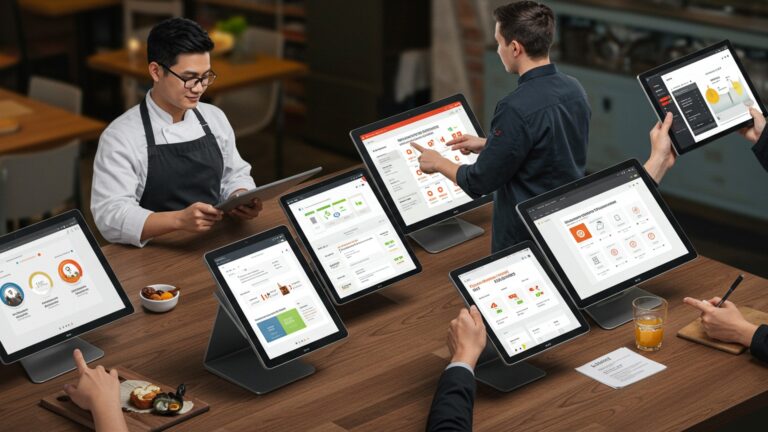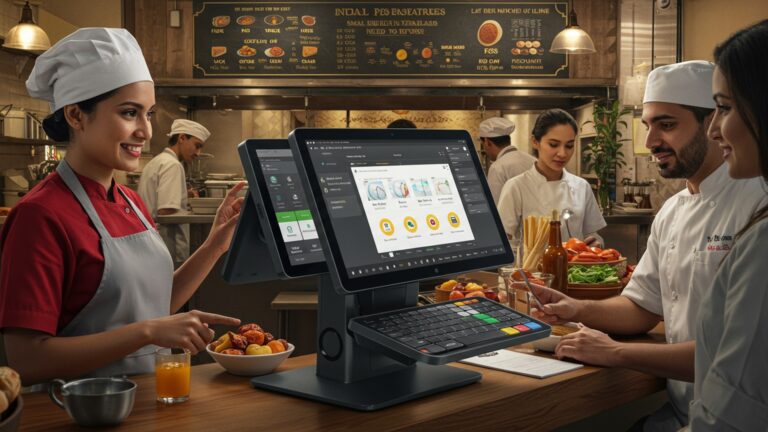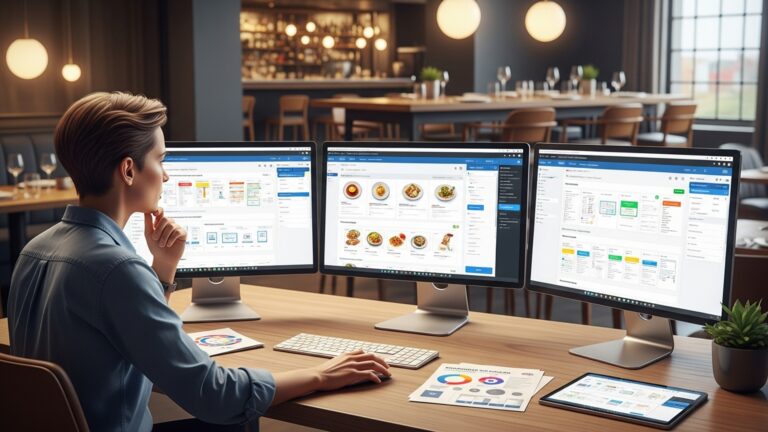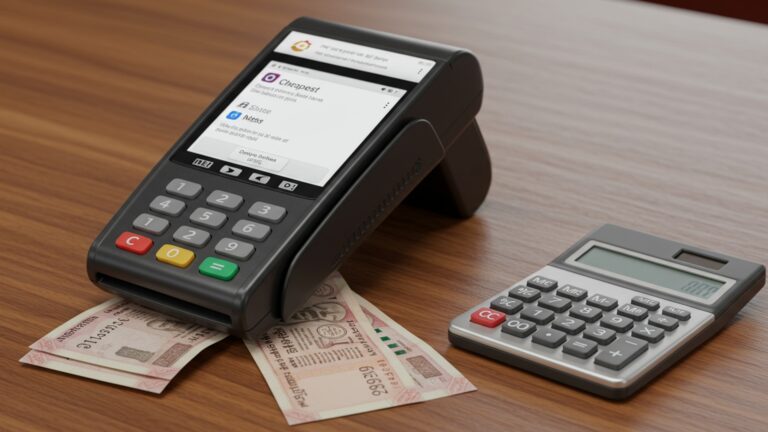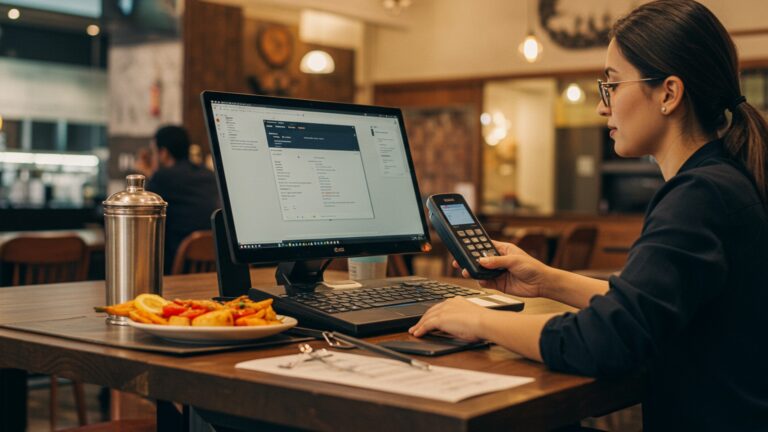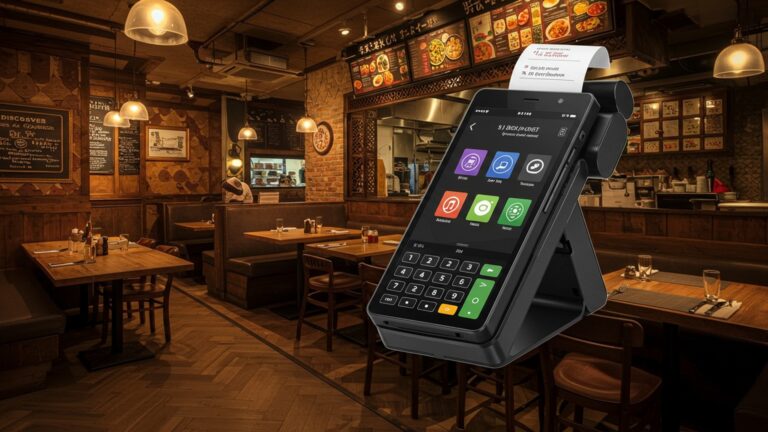How to Select the Ideal POS System for Indian Restaurants Guide
Indian restaurants navigate a complex operational landscape, from managing diverse regional menus with intricate Kitchen Order Tickets (KOTs) for dishes like a multi-course thali to integrating seamlessly with dominant food delivery platforms like Zomato and Swiggy. The search for the best POS system for restaurants India transcends mere transaction processing; it’s about deploying intelligent, cloud-based solutions that offer real-time inventory synchronization, facilitate QR-code based table ordering. securely handle digital payments via UPI. Selecting an ideal system empowers owners to streamline operations, gain actionable insights from sales data. ultimately elevate the customer experience in a rapidly evolving market.
Written by PromotoAI
promotoai generate content that ranks
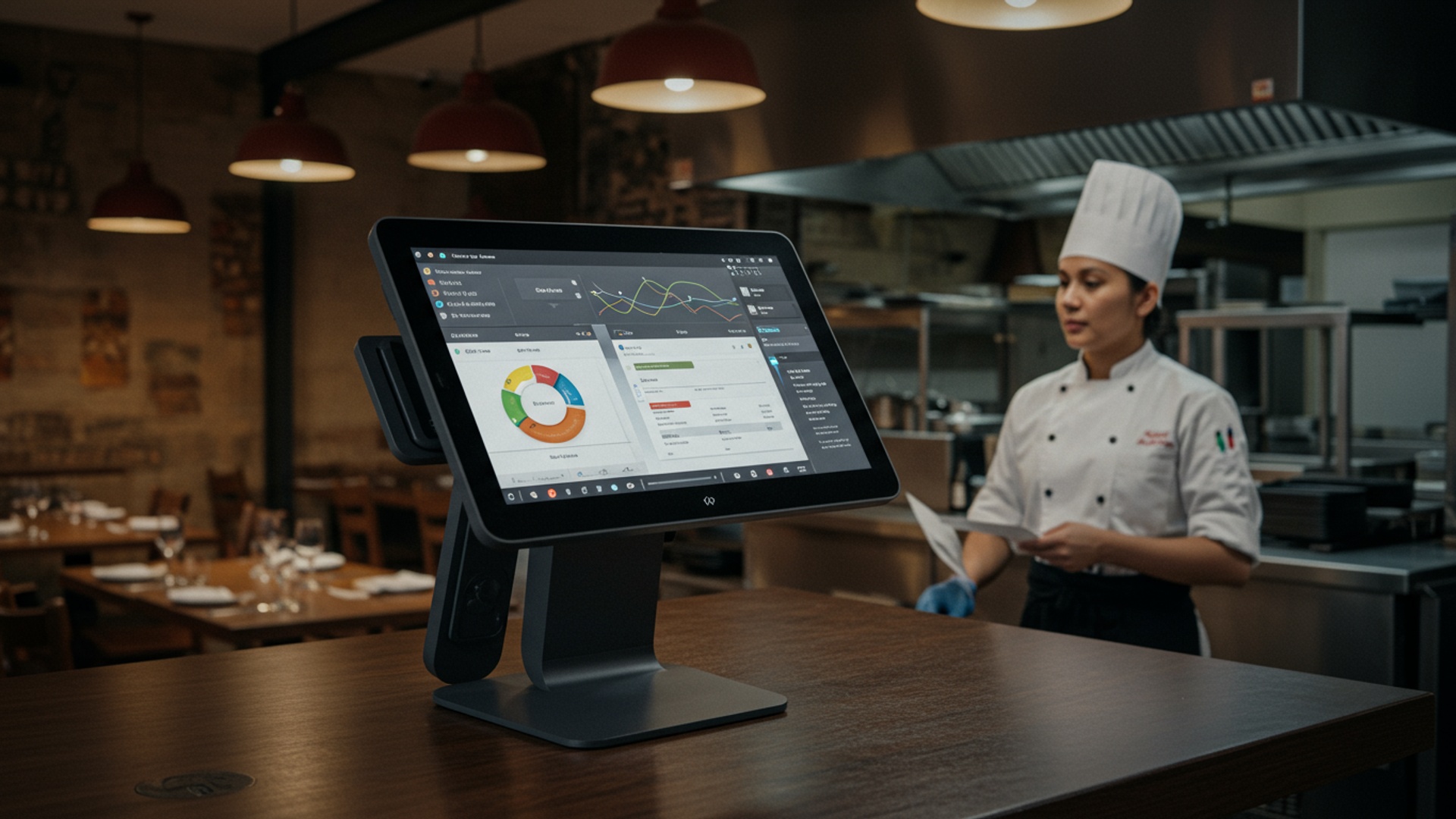
Understanding the Unique Needs of Indian Restaurants
Running an Indian restaurant is a vibrant, often complex, culinary journey. From the intricate spices of a Hyderabadi Biryani to the delicate balance in a South Indian Dosa, the operational demands are unique. Unlike many other cuisines, Indian food often involves extensive ingredient lists, customisable dishes. a high volume of takeaway and delivery orders. This complexity extends to billing, inventory. customer management, making a generic Point-of-Sale (POS) system largely insufficient. To truly thrive, Indian restaurants require a specialised POS solution that understands and caters to these specific operational nuances. The goal isn’t just to process transactions. to streamline every aspect of the restaurant, enhancing efficiency and customer satisfaction. This guide will help you navigate the features and considerations to select the Best POS system for restaurants India, ensuring it’s a perfect fit for your establishment.
What is a POS System? A Quick Refresher
At its core, a Point-of-Sale (POS) system is the central hub for all transactions and many operational tasks within a restaurant. Think of it as far more than just a cash register. A modern POS system integrates various functions, from taking orders and processing payments to managing inventory and tracking sales data. For an Indian restaurant, this means a system that can handle everything from a diner ordering a multi-course meal at a table to a customer picking up a pre-ordered family pack of curries. It digitalises processes that were once manual, reducing errors, speeding up service. providing invaluable insights into your business performance. Essentially, it’s the technological backbone that keeps your restaurant running smoothly and profitably.
Key Features to Look For in a POS System for Indian Restaurants
When searching for the Best POS system for restaurants India, certain features become non-negotiable due to the specific operational demands of Indian cuisine. Here’s a breakdown of what to prioritise:
Menu Management for Diverse Indian Cuisine
- Complex Item Customisation: Indian dishes often come with extensive customisation options – “less spicy,” “no onion,” “extra paneer,” “butter naan instead of plain.” Your POS must easily handle these modifiers, linking them to pricing and kitchen instructions.
- Combo and Thali Management: Many Indian restaurants offer Thalis (platters) or combo meals. The POS should allow for easy creation and modification of these bundles, including choices for curries, breads, rice. desserts.
- Regional Menu Variations: If you have multiple outlets or seasonal menus, the system should allow for easy updates and management of different menus across locations or timeframes.
- Detailed Ingredient Mapping: Crucial for recipe costing and inventory, especially with the wide array of spices and fresh produce used in Indian cooking.
Efficient Order Management and Kitchen Workflow
- Kitchen Order Ticket (KOT) System: Digital KOTs sent directly to the kitchen display system (KDS) or printers, clearly itemising orders, modifications. table numbers, are essential for accuracy and speed.
- Table Management: Visual table layouts, seat management. the ability to split or merge tables are vital for dine-in operations.
- Online Order Integration: Seamless integration with popular food delivery platforms (Swiggy, Zomato, etc.) and your own online ordering system to consolidate all orders in one place. This prevents manual data entry errors and streamlines dispatch.
- Takeaway & Delivery Management: Features for tracking delivery personnel, assigning orders. managing delivery zones are critical.
Flexible Billing and Payment Processing
- Split Billing Options: Indian group dining often requires splitting bills by item, by person, or by custom amounts. A robust POS must handle this effortlessly.
- Multiple Payment Methods: Support for cash, credit/debit cards, UPI (Unified Payments Interface), mobile wallets (Paytm, Google Pay). even loyalty points is a must-have in India.
- GST Compliance: Automatic calculation and reporting of Goods and Services Tax (GST) as per Indian regulations.
- Discount and Promotion Management: Easily apply various discounts, coupons. promotional offers.
Robust Inventory Management
- Raw Material Tracking: Given the extensive use of fresh ingredients and spices, tracking raw materials, from flour to specific masalas, is paramount.
- Recipe Management: Link menu items to their precise ingredient lists and quantities. This is fundamental for accurate costing and inventory deduction. For example, a “Chicken Tikka Masala” recipe should automatically deduct chicken, specific spices, cream, etc. , from inventory.
- Waste Management: Track spoilage, spillages. complimentary items to get a true picture of stock levels and costs.
- Vendor Management: Manage supplier details, purchase orders. track goods received.
- Stock Alerts: Automated alerts for low stock levels to prevent running out of popular ingredients.
Customer Relationship Management (CRM)
- Customer Database: Build a database of customer data, including order history and preferences.
- Loyalty Programs: Implement points-based or discount-based loyalty programs to encourage repeat business.
- Feedback Management: Collect and act on customer feedback directly through the POS or integrated systems.
Comprehensive Reporting and Analytics
- Sales Reports: Detailed daily, weekly. monthly sales reports by item, category. payment type.
- Cost of Goods Sold (COGS): Track the cost of ingredients against sales to comprehend profitability.
- Performance Metrics: Insights into peak hours, best-selling dishes, server performance. average table turnover.
- Inventory Reports: Track consumption, wastage. stock levels.
Staff Management
- Employee Roles and Permissions: Define different access levels for staff (e. g. , cashier, server, manager).
- Time and Attendance Tracking: Clock-in/clock-out features for payroll accuracy.
- Performance Tracking: Monitor individual server sales and efficiency.
Essential Integrations
- Third-Party Delivery Platforms: As mentioned, crucial for consolidating online orders.
- Accounting Software: Link with Tally, Zoho Books, or other accounting platforms for seamless financial reconciliation.
- Loyalty and Marketing Tools: Integrate with email marketing or SMS platforms to run targeted campaigns.
On-Premise vs. Cloud-Based POS Systems
The choice between an on-premise and a cloud-based POS system is fundamental. Each has its own set of advantages and disadvantages. the Best POS system for restaurants India for you will depend on your specific operational style and budget.
| Feature | On-Premise POS | Cloud-Based POS |
|---|---|---|
| Data Storage | Data stored locally on your restaurant’s servers. | Data stored remotely on the provider’s secure cloud servers. |
| Accessibility | Requires local network access; limited remote access without VPN. | Accessible from anywhere with an internet connection via web browser or app. Ideal for owners managing multiple outlets or remote monitoring. |
| Cost Structure | Higher upfront cost for hardware and software licenses. Lower ongoing subscription fees. | Lower upfront cost, typically a monthly or annual subscription fee. Includes software updates and maintenance. |
| Maintenance & Updates | You are responsible for hardware maintenance, software updates. data backups. Can be complex and require IT expertise. | Provider handles all maintenance, updates. data backups. Updates are automatic and seamless. |
| Scalability | Can be challenging to scale; requires additional hardware/licenses for new locations or increased capacity. | Highly scalable; easy to add new terminals, users, or locations with just a few clicks. |
| Security | Relies on your internal network security. Vulnerable if local systems are compromised. | Provider is responsible for data security, often with robust encryption and backup protocols. Generally more secure against local threats. |
| Internet Dependence | Can operate offline, though some features might require internet. | Requires a stable internet connection for full functionality. Many systems offer an “offline mode” for basic operations during outages. |
For most modern Indian restaurants, especially those looking to scale or manage multiple locations, a cloud-based system often provides greater flexibility, lower initial investment. easier maintenance. But, for a very small, single-location operation with specific legacy hardware, an on-premise solution might still be considered.
Cost Considerations: Beyond the Sticker Price
When budgeting for the Best POS system for restaurants India, it’s crucial to look beyond the initial purchase price. There are several components that contribute to the total cost of ownership:
- Software Licensing/Subscription: For cloud-based systems, this is a recurring monthly or annual fee. On-premise systems typically involve a one-time license fee. may have annual maintenance contracts.
- Hardware Costs: This includes the POS terminal (tablet or desktop), cash drawer, receipt printer, kitchen printer, barcode scanner (if applicable). potentially a Kitchen Display System (KDS). Prices can vary significantly based on brand and specifications.
- Installation and Setup: Some providers include this, while others charge a separate fee for initial setup, data migration. menu configuration.
- Training: Essential for your staff to effectively use the system. Some vendors include basic training, others charge for extensive sessions.
- Ongoing Support & Maintenance: Crucial for resolving issues, receiving updates. ensuring system uptime. Check if support is included in the subscription or if it’s an additional cost. Look for 24/7 support, especially if your restaurant operates late hours.
- Payment Processing Fees: These are typically charged by your payment gateway provider. it’s vital to interpret how they integrate with your POS and any potential hidden fees.
- Integration Fees: If you need to integrate with third-party delivery apps, accounting software, or loyalty programs, check if there are additional costs for these connectors.
A common mistake is to only consider the software cost. Always ask for a detailed breakdown of all potential costs over a 3-5 year period to get a realistic picture.
Implementation and Support: What to Expect
Even the most feature-rich POS system is only as good as its implementation and the support behind it. For an Indian restaurant, where peak hours can be incredibly demanding, a smooth rollout and reliable support are paramount.
- Onboarding and Training: A good provider will offer comprehensive training for your staff. This should cover everything from taking orders and processing payments to inventory management and reporting. Hands-on training during slower hours is ideal.
- Data Migration: If you’re moving from an old system or manual processes, the provider should assist with migrating your menu, customer data. initial inventory.
- Technical Support: What kind of support is offered? Is it 24/7, email-only, or phone support? Response times are critical, especially during operational hours. Imagine your POS system crashing during the dinner rush – quick resolution is non-negotiable.
- Software Updates: For cloud-based systems, updates are usually automatic. For on-premise, grasp the update schedule and how they are applied. Updates should ideally bring new features, security enhancements. bug fixes without disrupting operations.
- Hardware Support: If you purchase hardware from the POS vendor, comprehend their warranty and repair/replacement policies.
- Local Presence: For Indian restaurants, having a provider with a strong local presence in India can be a significant advantage, ensuring faster on-site support if needed and a better understanding of local market nuances. This is a key differentiator when seeking the Best POS system for restaurants India.
Always ask for references from other restaurants, especially Indian ones, to gauge their experience with the vendor’s implementation and support services.
Evaluating Potential POS Providers
Once you’ve shortlisted potential POS systems, it’s time for thorough evaluation. This is where you put theory into practice.
- Request a Demo: Don’t just watch a generic video. Ask for a live, personalised demonstration that focuses on the specific needs of your Indian restaurant. Show them your menu, explain your typical order flow. ask them to demonstrate how their system handles it.
- Trial Period: Many cloud-based providers offer a free trial. This is invaluable for getting hands-on experience and allowing your staff to test the system in a real-world (or simulated) environment.
- Check Reviews and Testimonials: Look at online reviews (Google, Capterra, G2, etc.) and ask for references from existing customers, particularly other Indian restaurants. What are their pain points? What do they love?
- grasp the Contract: Read the fine print. grasp the terms of service, cancellation policies, data ownership. any clauses regarding price increases.
- Scalability: Consider your future plans. If you intend to open more branches or expand your services (e. g. , catering), ensure the POS system can grow with you without requiring a complete overhaul.
Engaging with multiple vendors and comparing their offerings side-by-side will give you the clearest path to choosing the Best POS system for restaurants India that aligns perfectly with your business goals.
Actionable Checklist for Choosing Your POS
To summarise, here’s an actionable checklist to guide your decision-making process:
- Identify Your Core Needs: List out all essential features specific to your Indian restaurant (menu customisation, KOT, online order integration, inventory for raw materials, GST compliance, split billing).
- Budget Appropriately: Account for all costs – software, hardware, installation, training. ongoing support.
- Cloud vs. On-Premise: Decide which architecture best suits your operational style and future plans. Most Indian restaurants benefit from cloud-based flexibility.
- Feature Deep Dive:
- Does it handle complex Indian menu modifiers, combos. Thalis easily?
- Is the KOT/KDS system efficient and clear for your kitchen staff?
- Does it seamlessly integrate with popular Indian delivery platforms?
- Can it manage detailed raw material inventory and recipe costing?
- Are split billing and diverse payment options (including UPI) robust?
- Does it offer valuable sales, inventory. staff reports?
- What CRM and loyalty features are available?
- Evaluate Support & Implementation:
- What is the quality and availability of technical support?
- Is comprehensive staff training provided?
- What are the onboarding and data migration processes?
- Does the vendor have a strong local presence in India?
- Test Drive & Research:
- Request a personalised demo.
- Utilise free trial periods.
- Check independent reviews and ask for references.
- Review Contracts Carefully: comprehend all terms, conditions. potential hidden fees.
By following this comprehensive guide and checklist, you’ll be well-equipped to select a POS system that not only streamlines your operations but also contributes significantly to the growth and success of your Indian restaurant.
Written by PromotoAI
promotoai generate content that ranks
Conclusion
Choosing the ideal POS for your Indian restaurant isn’t just a purchase; it’s an investment in your operational heart. Remember, the best system caters specifically to the nuances of Indian dining – from managing complex thali orders and half-plate requests to seamless integration with popular delivery platforms like Zomato and Swiggy, a vital current trend. A personal tip: always insist on a live demo with your actual menu items, testing offline capabilities, crucial for handling India’s occasional power fluctuations. This hands-on approach reveals true system compatibility. Don’t settle for generic software; seek out one that understands the rhythm of an Indian kitchen and the flow of your guests, much like the precision of a master chef. Prioritize scalability and robust local support, ensuring your system grows with you, whether you’re opening a new outlet or expanding your delivery radius. This strategic choice will not only streamline your billing and inventory but profoundly elevate your customer experience, setting the stage for remarkable growth and sustained success.
More Articles
How to Choose the Best Android POS for Your Restaurant in India
Learn How to Implement POS Software for Cloud Kitchen Success in India
How to Get the Most Affordable POS for Your Indian Restaurant Business
7 Best POS Software Options to Boost Your Business Efficiency
Discover the 7 Best POS Software Solutions in India for Your Business
Written by PromotoAI
promotoai generate content that ranks
FAQs
What’s the absolute first thing an Indian restaurant owner should consider when picking a new POS?
Start by focusing on core functionality. Does the system handle your specific menu items like thalis, dosas, or curries with various modifiers (spice levels, add-ons)? Can it manage tables efficiently, split bills easily. process orders quickly during peak hours? Prioritize features that directly impact your daily operations and customer experience.
Should I go for a cloud-based POS or stick with a traditional on-premise system for my restaurant?
For most Indian restaurants, a cloud-based POS is a far better choice. It offers remote access to your data, automatic software updates, better data security. often lower upfront costs. Plus, it’s more scalable and integrates seamlessly with modern tools like online ordering and delivery platforms, which are crucial today.
My Indian menu has tons of variations – different spice levels, combo meals. custom orders. Can a POS really handle all that complexity?
Absolutely! A good POS system for an Indian restaurant must have robust menu customization capabilities. Look for features that allow easy modification of ingredients, spice levels, combo options. even custom notes for the kitchen. This ensures every order is accurate, no matter how specific the customer’s request.
With so much online ordering happening, how can a POS help my restaurant manage deliveries effectively?
The ideal POS will integrate seamlessly with popular food delivery aggregators (like Zomato, Swiggy) and often provide its own online ordering platform. This streamlines the entire process from order taking to kitchen communication (via a Kitchen Display System or KDS) and delivery management, reducing errors and speeding up service.
What if my internet goes down or I have a technical issue? How essential is local support and offline capability?
Extremely essential! In India, internet stability can be a concern. Look for a POS provider with strong, responsive local support. Crucially, ensure the system has an ‘offline mode’ so you can continue taking orders, printing bills. managing transactions even without an internet connection, with data syncing once connectivity returns.
I’m on a tight budget. Are there affordable POS options that still offer good value for an Indian restaurant?
Yes, many modern POS systems offer flexible pricing, often on a subscription basis, which can be budget-friendly. Focus on the value provided rather than just the lowest price. A slightly pricier system that significantly streamlines operations, reduces errors. improves customer satisfaction can actually save you more money in the long run through increased efficiency and revenue.
Will a new POS complicate my busy kitchen or actually make things smoother?
It should definitely make things smoother! Look for features like clear, well-organized Kitchen Order Tickets (KOTs) and, ideally, a Kitchen Display System (KDS). A KDS helps manage order queues, track cooking times. reduce paper waste, making your kitchen more efficient, organized. less prone to errors during peak hours.

